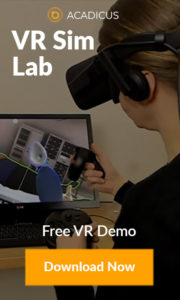[UPDATE: We have now published an eBook about Architectural Visualization with Unity3D (including a chapter about Oculus Rift) that can be purchased HERE.]
I wish I had more time to write out a more extensive review of the Rift, but here are my first impressions:
- You absolutely feel as if you are transported to another place, to the point where it’s almost scary.
- Voices and objects around you in the physical world suddenly seem very foreign or distant, since they don’t exist in the world you’re seeing. Whenever I bump my desk when trying to reach out and touch something in the virtual world, it feels really strange.
- Developers who are saying it’s somewhat low resolution, and it makes you a little motion sick are right, but those are largely insignificant aspects that can easily be overcome.
- The truth is you forget about all of that because of the overwhelming, jaw-dropping sense of immersion.
- The low resolution isn’t really that bad. The consumer version will have higher resolution, and you really can completely forget about it due to the overall experience of being transported to another place.
- I’ve never met anyone more prone to motion sickness than I am. I get motion sick sitting in a rocking chair. Standing still in the Rift, I was totally fine – and for the most part, even just standing still is a jaw-droppingly awesome experience on its own. Moving around took some getting used to, but I got used to it pretty quickly. This definitely isn’t something you’re going to want to do for extended periods of time.
- I think what makes you feel whoozy has more to do with the fact that you feel like you’re suddenly in another place. That really does have a strange psychological effect unlike anything else I’ve ever experienced.
- Fast pace fps games aren’t the killer app for this. They are more likely to cause motion sickness.
- Contemplative, slow paced, experience-focused projects are the best foot forward for developers, imho.
- Attention to detail is key. In the Tuscany demo, you can walk up and look at cracked wall textures, little candles with a flame flickering.. it’s the tiny details that make a huge difference. Moving too fast through it misses the point altogether, imho.
- Special integration with Second Life and OpenSim should be top priority. Those kinds of builds will be absolutely perfect for Rift, but performance will be the biggest bottleneck (more on this next..).
- Games with an emphasis on narrative and experience, like Dear Esther will be the big winners.
- Architectural visualization from a mainstream perspective is a long ways off, since it requires 60 fps (it really does.. no way around that..it doesn’t work well without 60 fps+), and even the simplest architectural visualization builds I’ve done rarely top 40 fps even on a gaming rig.
- Architectural visualization projects with Oculus Rift are certainly possible, but will require very careful optimization by a pro 3D modeler who is very experienced in game-ready development. Forget about importing Revit models.. you won’t get past the front door.
- Any kind of training, simulation, and education will enjoy a HUGE new world of opportunity with technology like Rift. Any condition where there is an advantage of creating a deeply immersive sense of place will be killer apps for this kind of VR.

